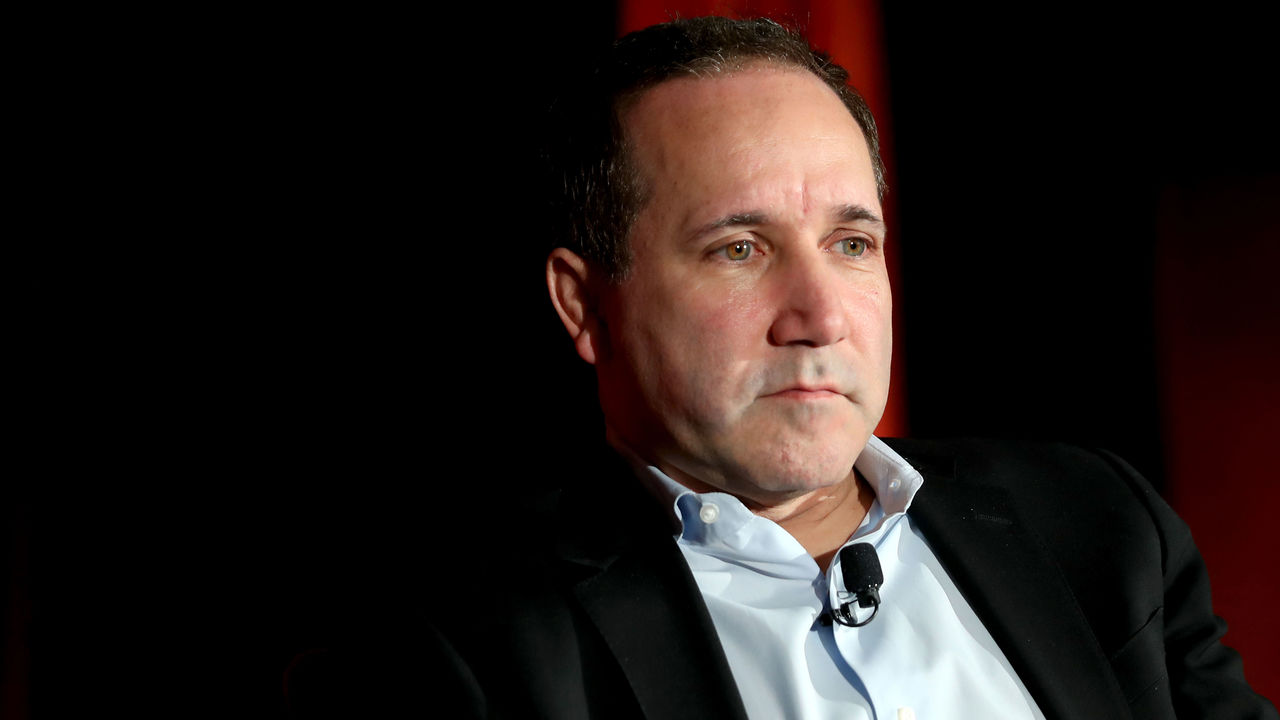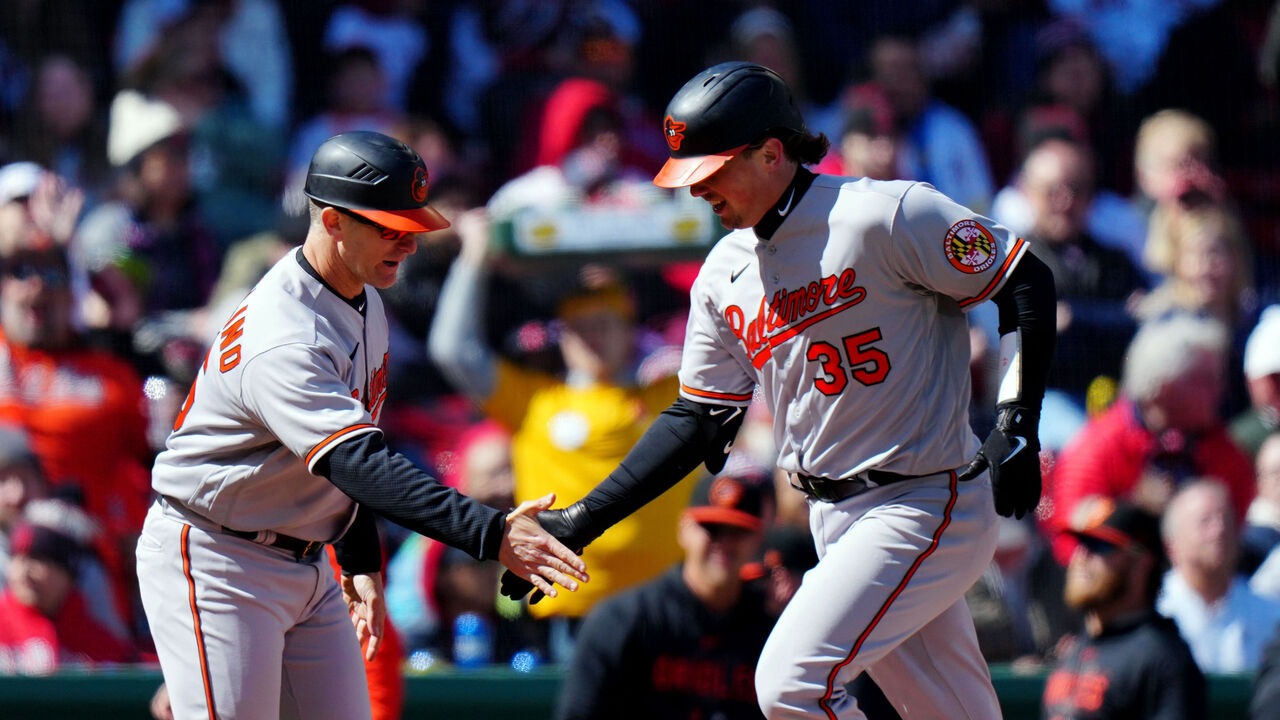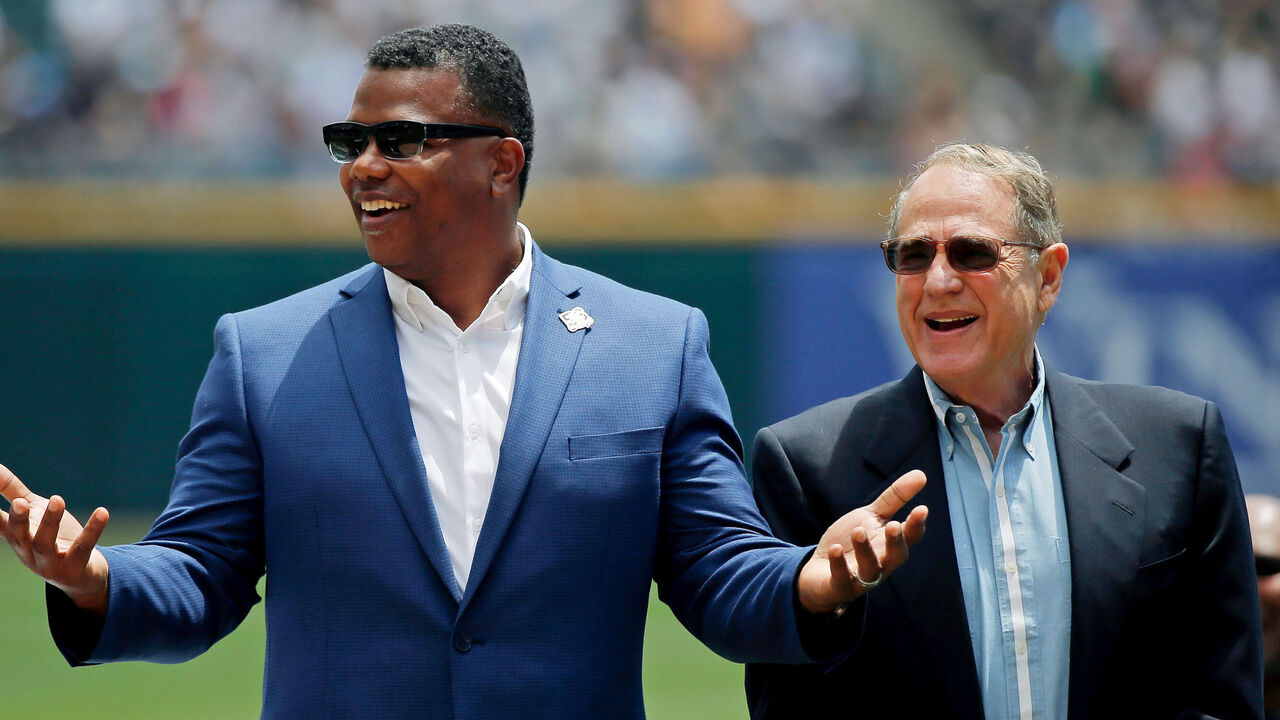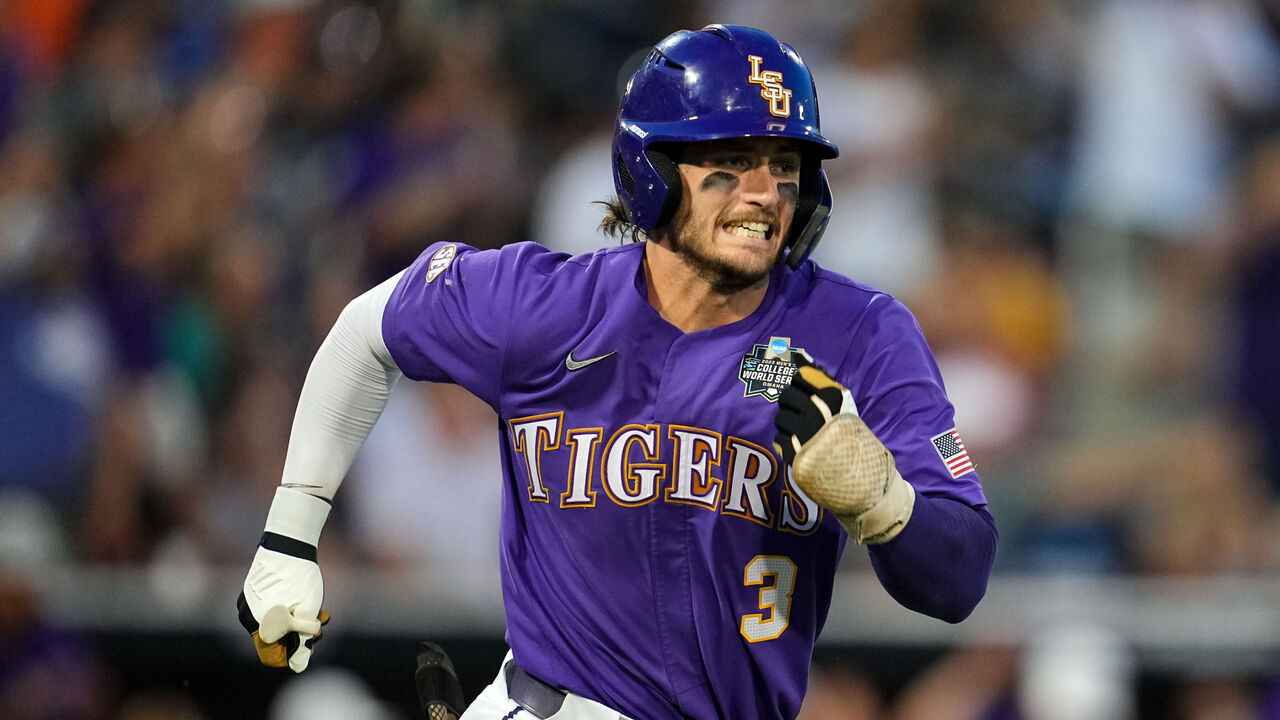Small-market financial fretting, Ohtani injury fallout, and 7 more thoughts
Leading off …
We've heard this all before and all too often.
It goes something like this: The owner of a club that doesn't reside in a major coastal market complains that a star player, or players, will become too expensive to retain unless the club's fans pay the bill.
This week, it was Baltimore Orioles owner John Angelos in an interview with Tyler Kepner of The New York Times.
"The hardest thing to do in sports is be a small-market team in baseball and be competitive, because everything is stacked against you - everything," Angelos said. And he conceded that it might not be feasible for his popular young core to be career Orioles like Brooks Robinson, Jim Palmer, and Cal Ripken Jr.
Without major changes, he sees only one way the team could retain all of its young stars.
"We're going to have to raise the prices here - dramatically," he said.

But what's different in this instance is the timing. The best parts of the Orioles' exciting core are years away from arbitration and free-agency eligibility. Catcher Adley Rutschman isn't eligible for arbitration until 2025 and free agency until 2028. Infielder Gunnar Henderson is a year behind Rutschman. Yet the club's owner is already pouring cold water on the prospect of keeping the group together.
This narrative from small-market owners is a drag on the sport. Until an owner willingly agrees to open their books to support their claims of poverty, there will continue to be doubt, given the amount of revenue sharing and national TV dollars we know are underpinning the game's finances.
Stephen Dodson, a portfolio manager at the San Francisco-based Bretton Fund, told theScore last year that there's truth to the idea that pro sports teams don't produce wide profit margins in comparison to many other publicly traded businesses.
"A sports team is almost always worth more to a very rich person than it is to a company who only cares about its cash flows," Dodson wrote in an email. "Sports teams are a bit of a vanity asset, like owning a Picasso, and the highest bidder is going to be a very rich person who wants to own the team so they (can) call themselves an owner of a sports team."
That sheds light on why many owners are happy to let the rising tide of franchise valuations pad their portfolios without putting too much money into helping the actual product on the field.

But what would be welcome for fans in all these small markets is for there to be a truly level financial playing field. In the present system, there's simply little incentive for owners to spend the money they receive from revenue sharing and national TV deals.
In Baltimore, the club is building a player-development powerhouse. It's churning out stars producing dividends for minimum salary. To his credit, Angelos has put in place an elite baseball operations department and let it execute its vision.
Forcing owners to spend the money they receive outside what they generate in their own markets would mean imposing certain payroll levels - such as a payroll floor - which would require major changes to a CBA that's only two years into a five-year term.
The owners floated a cap-and-floor system early in the last round of labor negotiations, but MLBPA leadership remains steadfastly against a cap even though very few of its constituents ever collect enough service time to reach late-stage arbitration or free agency.
Adding a mechanism that forces owners to spend remains a pipe dream. But here's wishing there was more focus from MLB players and owners on working together on ways to grow the sport's revenue and less focus on which side is squeezing the last dollar out of the other's pocket.
For instance, the pitch clock is overwhelmingly popular and is almost certainly playing some role in the attendance spike this year. Why not focus on more areas to improve the game, which would generate more interest and thereby increase dollars?
MLB needs a growth mindset, not a fixed one. The Orioles are too young and too good to already be thinking about how their time together is limited.
No. 2: MLB can't have nice things
It's difficult to imagine worse timing for Shohei Ohtani, the Los Angeles Angels, and MLB. The two-way star has a ligament tear in his pitching elbow.
Whether he'll require his second Tommy John surgery or can heal through rest is unclear. But Ohtani won't pitch the rest of the season.
It's a major blow for a team that was a buyer at the trade deadline despite slim playoff odds.

And it's also a major blow to the sport in general, as Othani was having a historic season, chasing the first 50-homer and 200-strikeout season in history. He was leading the majors in adjusted OPS+ and ERA+, and he had accumulated 9.6 bWAR to date - 2.5 more than second-place Mookie Betts. It was perhaps the most remarkable season in the game's history.
As we examined earlier this summer, diagnosing elbow strains - which are partial tears of the ligament - is tricky. Hopefully, Ohtani doesn't need another Tommy John surgery. Ohtani was diagnosed with a Grade 2 UCL sprain in June 2018 that eventually required surgery after the season. The ligament repair in the surgery usually holds for about seven years. Ohtani's appears to have lasted just four since his return to the majors.
There'll be those who point to Ohtani and say his two-way stardom was never sustainable. Perhaps, but we don't know. More likely is the fact that most high-velocity pitchers suffer multiple injuries throughout their careers. The terrible conundrum for MLB pitchers is that with greater velocity comes more success but also greater injury risk.
No. 3 More Ohtani fallout
The injury creates a whole new series of questions, including what it means for his next contract.
He's a few months away from reaching free agency, what was anticipated to be the most expensive courtship in MLB history. Maybe it still will be. If Ohtani is sidelined as a pitcher for all of next season and limited to part of the season as a hitter pending his recovery, how much will clubs alter their offers? Would Ohtani consider a shorter-term offer to hit the open market again with full health? Or is he such a talent, such a draw, that even a part-time 2024 won't stop teams from making offers of $400 million to $500 million?
Does it increase the Angels' chances of retaining him, or is he likely bound for the Los Angeles Dodgers or a New York club regardless?
No. 4: Who should lead the White Sox?
The week included other big news items, namely the dismissal of the Chicago White Sox top baseball executives, Ken Williams and Rick Hahn.

For the White Sox to truly turn things around, they might need a new ownership group. It's unclear how attractive the job is, given the resource limitations and apparent top-down involvement in some hiring decisions.
But there are only 30 GM jobs in the sport. Early reports indicate Reinsdorf will elevate assistant GM and player development boss Chris Getz to the GM role and look to add an executive such as former Royals president Dayton Moore. Getz worked for Moore in Kansas City for three seasons.
If Reinsdorf is willing to cast a wider net, Orioles assistant GM Sig Mejdal ought to be on any shortlist, given the success he's had in key roles in St. Louis, Houston, and now Baltimore.
James Click was the GM of the World Series champion Houston Astros last year before ownership's bizarre decision not to extend his contract. He also possesses front-office pedigree from his time in Tampa Bay.
Not many quantitative analysts have risen to the top of baseball leadership circles, but Mike Fast was a key member of the Astros' front office and is now a senior vice president of baseball operations with the Atlanta Braves.
Speaking of ex-Astros officials, is Jeffrey Luhnow, the original architect of the Astros' rise to success, able and willing to return from exile? Most of those involved or around the sign-stealing scandal are again employed in baseball.
Picking one of Andrew Friedman's lieutenants from the Dodgers' front office is never a bad play. Perhaps there could be a continuation of the trend toward former major leaguers with analytical skills and organizational acumen. Getz would fit that definition. New GM Chris Young has helped the Texas Rangers to a surprising season, and perhaps Philadelphia Phillies GM Sam Fuld is ready to assume command somewhere after apprenticing under team president Dave Dombrowski.
No. 5: The player development divide
Perhaps the greatest gulf between the best clubs and others remains in player development.
Lance Lynn might be the latest example.
Lynn struggled in the first half of the season with the White Sox - compiling a 6-9 record with a 6.47 ERA. He was traded to the Dodgers at the deadline, and he's 3-0 with a 1.44 ERA since.
"They laid some stuff out. Showed me what I was doing well, showed me what I was doing bad," Lynn told me this week in Cleveland.
Lynn made a pitch-mix change with the Dodgers, bumping up his four-seam usage. But what he says the club gave him more than anything is confidence. The best clubs get the most out of their players.
No. 6: The 1-knee revolution
When Tanner Swanson began teaching the one-knee catching stance throughout the Minnesota Twins' system a few years ago, the Twins enjoyed tremendous gains in the pitch-framing results of catchers like Mitch Garver. The technique spread throughout the game.
The belief was that such a stance held a trade-off: better framing results but more passed balls.
But the data isn't bearing that out, according to Baseball America's J.J. Cooper.
This year is on pace to have the second lowest rate of passed balls and wild pitches since 1890. (1st was last year).
— JJ Cooper (@jjcoop36) August 21, 2023
For WP+PBs, this is set to be the lowest rate since 2005.
Still seeing no sign one-knee catching is causing more PBs/WPs in the majorshttps://t.co/LGogIDGZcU pic.twitter.com/FVS6jDgJC3
One other factor might be that PitchCom devices are resulting in fewer miscommunications between pitcher and catcher, thereby causing fewer passed balls. But when he was with the Twins, Swanson told me he didn't see an uptick in passed balls or wild pitches. It's possible the one-knee approach is just a better way to catch.
No. 7: Surging Mariners, tough-luck Blue Jays
After slow starts to the season, only Bobby Witt Jr. has produced more WAR than Julio Rodriguez over the last month. Rodriguez is slashing .393/.432/.675 during that time, and the young superstar's resurgence is a big reason why the Mariners have clawed their way back into the wild-card race. The Mariners held just a 19% playoff probability at FanGraphs on the eve of the trade deadline when they traded their closer, Paul Sewald, to the Arizona Diamondbacks.
The Mariners, with their loaded pitching staff and red-hot Rodriguez, aren't a club any team would want to face in a short series.
Meanwhile, in Toronto, the Blue Jays are in a real fight now to regain a wild-card spot they had held for weeks. Despite the top-rated defense in baseball and elite numbers from the entire pitching staff, they remain stuck in neutral because of poor performance at the plate with runners in scoring position. They need (good) regression to the mean.
This Blue Jays season won't be submarined by weird RISP outcomes...
— Chris Black (@DownToBlack) August 22, 2023
This Blue Jays season won't be submarined by weird RISP outcomes...
This Blue Jays season won't be submarined by weird RISP outcomes... pic.twitter.com/4rM1D37PTB
No. 8: Skenes, Crews on the fast track
Paul Skenes and Dylan Crews, the first and second overall picks in the draft, have been impressive in their initial exposure to professional baseball. Both have already graduated to Double-A this past week, more evidence that both prospects are legit and have the potential to be franchise cornerstones.
In fact, both would likely hold their own at the major-league level right now.

If it weren't for issues of service-time manipulation and innings limits for pitchers, one wonders if more high-level prospects would be promoted more quickly. In other major sports, the best amateur prospects are thrown into the highest level of competition right away. And in baseball, how are you expected to improve against major-league competition if you're not facing major-league competition?
No. 9: The Angels are showing us the fastest track
Speaking of fast tracks, no club in recent memory is as aggressive as the Angels in promoting prospects. They've promoted their first-round pick from the most recent draft, Nolan Schanuel, to the major leagues, and he's holding his own so far. The promotion speaks to how desperate the Angels were to try to maximize their last remaining weeks of control over Ohtani.
The club also aggressively promoted its first-rounder from last season, Zach Neto, earlier this year. Although he's on the injured list with back inflammation, he's posted a 99 wRC+ while playing shortstop despite having just 201 minor-league plate appearances. Perhaps the Angels, by accident, are showing us that development timelines can be accelerated.
Stat of the week
17 years, 2 months, 24 days | The age of San Diego Padres catching prospect Ethan Salas, who was promoted to Double-A this week. Baseball America's No. 6 overall prospect could impact the major-league club on both sides of the ball.
He said it
"Old. Old and beat up." - Cleveland Guardians manager Terry Francona when speaking to reporters on Tuesday about how he's feeling at this point in the season. He admitted he's spoken to his Guardians bosses about the future. The 64-year-old has won the 13th-most games in MLB history and is in his 11th season in Cleveland. His tenure has been marked with time off to deal with health issues.
The topic of retirement came up with Tito today. Here's what he had to say: pic.twitter.com/Mlbl7ZsO6m
— Mandy Bell (@MandyBell02) August 22, 2023
After the story blew up, he reiterated on Wednesday that he has no plans and is focused on the remainder of the season as the Guardians battle for a playoff spot. After that, he'll focus on the offseason surgeries he has planned to help him regain his health.
"I also don't want the last six weeks to be about me. The focus has to be on the players," Francona added.
You don't see that every day at the ballpark
Gunnar Henderson elected not to stop at first base after ripping a ball down the line last week in Oakland, having already homered, doubled, and tripled. And good for him not to be beholden to the idea that collecting exactly 10 total bases in a game via one of each type of hit - a cycle - is superior to a total more than that.
Needing a single for the cycle, Gunnar Henderson laces a double down the line instead! pic.twitter.com/w8hGz1demx
— MLB (@MLB) August 20, 2023
Starting Lineup is a bi-weekly collection of reporting, observations, and insights from the Major League Baseball beat.
Travis Sawchik is theScore's senior baseball writer.